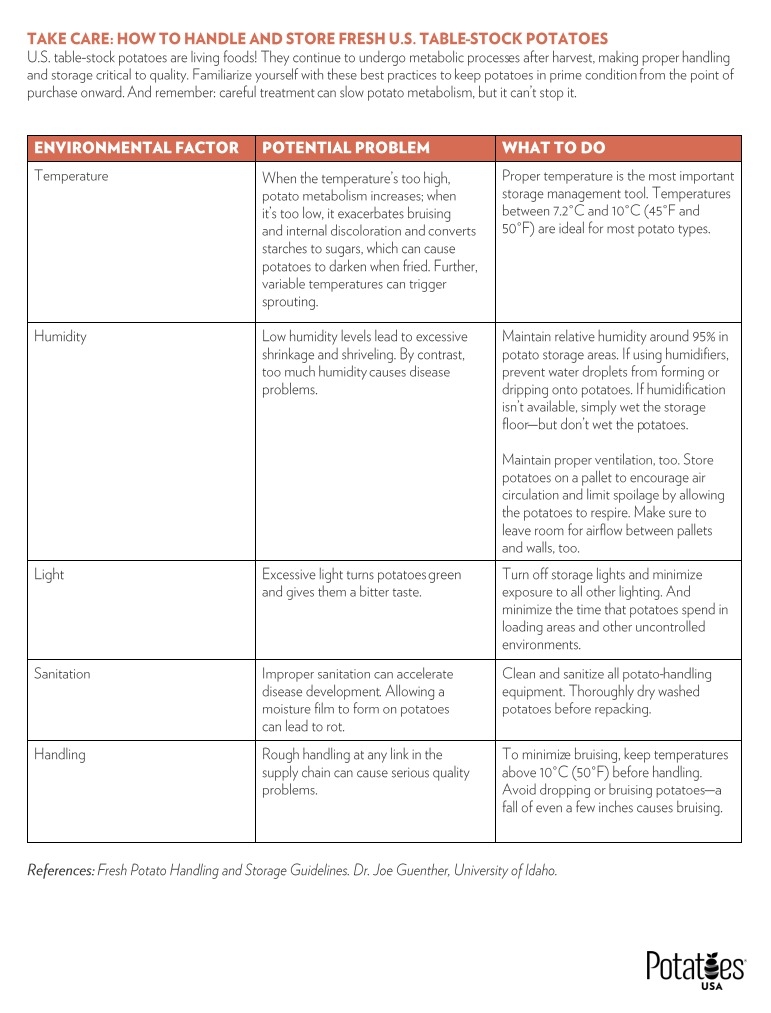If you've purchased a 5- or 10-pound bag of potatoes, chances are you aren't going to cook them all at once. Keeping potatoes fresh will extend their shelf life and give you the most bang for your buck. Here are some key tips on how to store potatoes once you get them home.
- First of all, don't wash potatoes (or any produce) until you're ready to eat. Dampness promotes early spoilage.
- Potatoes should be kept in a cool, dry, and well-ventilated place. Their optimal storage temperature is between 45ºF to 55ºF (or 7ºC to 12ºC).
- Perforated plastic bags and paper bags offer the best environment for extending shelf life.
- Colder temperatures (as in a refrigerator) cause a potato's starches to convert to sugar, resulting in a sweet taste and discoloration when cooked. If you refrigerate, letting the potato warm gradually to room temperature before cooking can reduce the discoloration.
- Avoid areas where temperatures tend to fluctuate, like beneath the sink or beside large appliances.
- It's best to keep potatoes out of the light, so don't keep them on countertops or near windows.
- Green on the skin of a potato is the build-up of a naturally occurring compound called solanine. It is a natural reaction to the potato being exposed to too much light. Solanine producers a bitter taste and, if eaten in large quantities, can cause illness. If there is slight greening, cut away the green portions of the potato skin before cooking and eating.
Here is more information on the how and why of keeping potatoes in optimal storage conditions.

